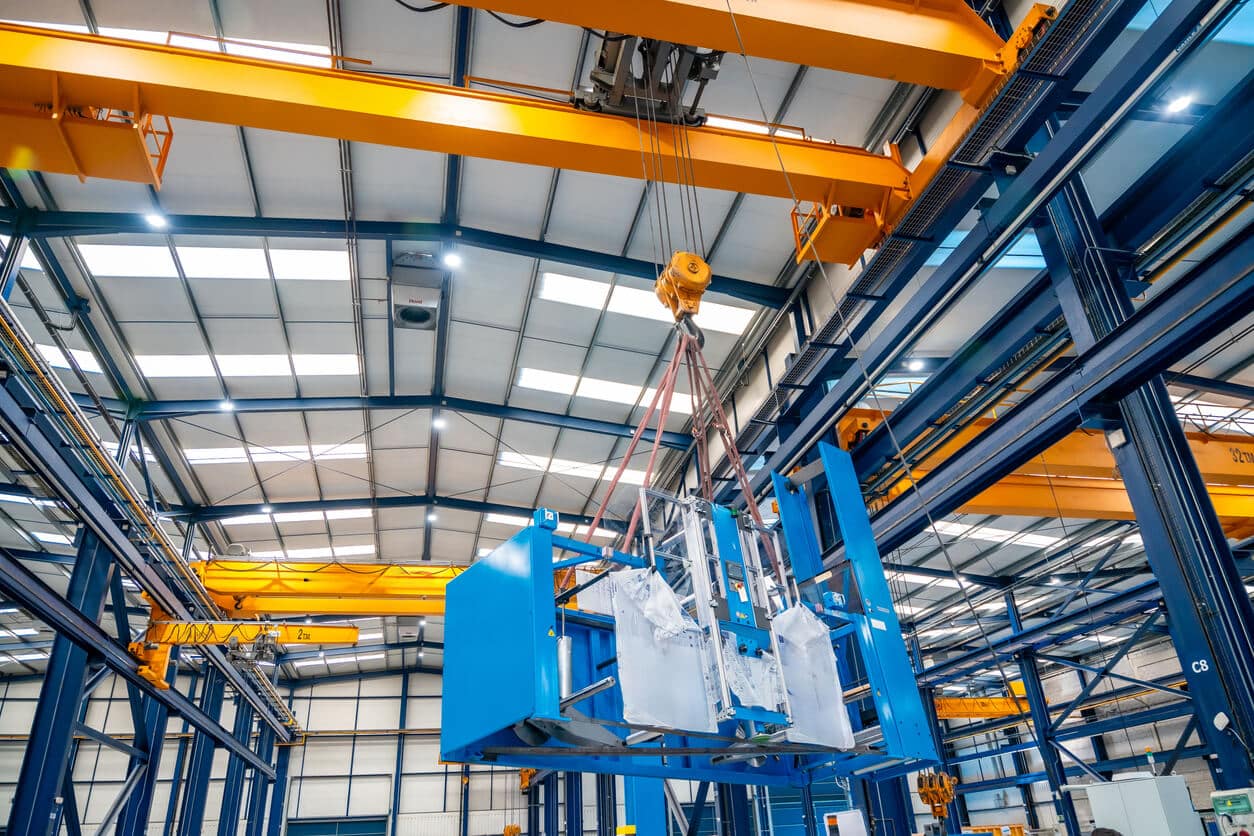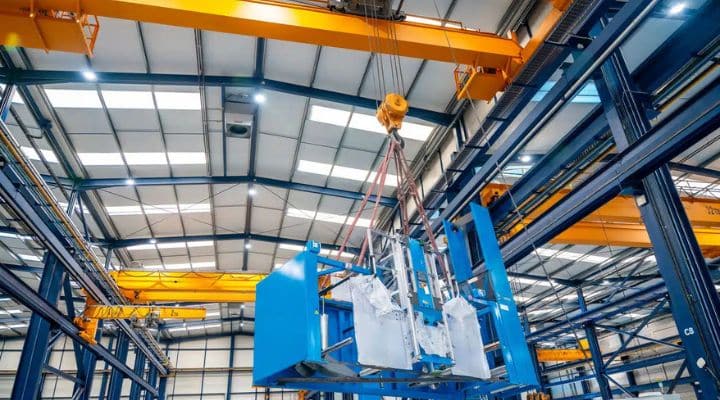
Load testing is one of the most important tests performed on overhead crane equipment. Load testing involves loading a crane to verify the maximum performance level of the structure, hoisting equipment and control systems.
Load testing is used to verify the maximum, safe load capacity of crane systems. These tests include a variety of conditions and statutory requirements.
Here we will discuss the importance of load testing, and under what conditions these types of tests are required or recommended.
Proof load tests are performed by new equipment manufacturers to ensure the safety of hoist and overhead cranes. This is why understanding load test requirements is critical to safe operation and maintenance of the equipment.
What Information Does Load Testing Provide?
Load testing is a process designed by engineers with the intent of verifying the maximum, safe functional capacity of a crane, hoist or overhead lifting system. A correctly executed load test will involve every point of potential failure of the machinery it may experience during use.
Although an overhead crane is designed to perform a certain function, it must still be tested under the same conditions for which it was designed before it can be used. New cranes or hoists entering service for the first time are required to be proof load tested at 100% to 125% of their rated capacity. This condition/requirement is commonly referred to as a “Commissioning Load Test.”
Load Testing for New Cranes and Hoists
Hoists and industrial overhead cranes perform one job, but they do it very well. Load capacity is verified by a simple load test. The data collected is used to ensure the functional rated capacity of the machine during normal use. By employing a test load greater than rated capacity, the equipment is put to the test outside of normal working conditions to ensure structural integrity, safe functionality and predictable performance under practical conditions.
Load Testing for User Safety
The most important reason for load testing is to ensure the safety of personnel operating or in proximity to the crane. OHSA requires certain test procedures when overhead cranes and hoists are serviced, repaired or modified. Because the safety of personnel is paramount, there are other situations after the commissioning when load testing may be required. These situations include:
1.) Following substantial modifications to the hoisting machinery or large component replacements including:
a.) Replacement or modification of the hoist gearing.
b.) Replacement or modification of the hoisting motor(s) and/ or hoisting brake(s).
2.) Following a shock or dropped load events to verify the integrity of the crane and/ or hoist.
3.) Engineered lifts:
a.) Under very specific guidance from a qualified engineer, lifting loads beyond a crane’s capacity is possible.
b.) Following a design review and review of critical loading calculations, lifts above a crane’s rated capacities can be performed on a case-by-case basis. If these “engineered lifts” become routine, a different piece of equipment or new, higher capacity crane or hoist should be considered.
4.) Aerospace, mining and other critical cranes may be subject to load testing requirements as part of a Preventative Maintenance program, or company directive.
Why Is Understanding Load Test Requirements So Important?
Misunderstanding load test requirements can result in property destruction, reduced service life of the equipment and even injury or death to an operator or bystanders. This is why practical load test requirements should be known and applied. ALWAYS verify that load test certificates are on file for your equipment and consult with a qualified overhead crane service company on when load testing should be performed.
We can never be casual when it comes to working with large, awkward objects. Insurance companies have been known to cancel policies when company culture does not focus on keeping accidents to a minimum.
What can happen if I ignore the Rated Capacity of an Overhead Crane or Hoist?
Imagine a 6-ton steel object falling 6 or more stories onto personnel, because the crane was overloaded and failed. Consider the impact of a crane losing a 10-ton load of steel plates over a pedestrian walkway or fork-lift travel isle in your plant. And what if it could all be avoided with a quick read of the capacity label all cranes and hoists are required to have?
Lifted materials (like steel beams, plates, or other heavy loads) and your rigging must be calculated and remain under the capacity rating of your equipment. Overhead cranes and hoists should NEVER be overloaded in normal operations, the results are often catastrophic with deadly consequences.
Where Can I Get More Help Understanding Load Testing?
Load testing is an important part of overhead lifting equipment design and good maintenance practices, but it can be a complex subject. Don’t worry if you don’t have all the answers you need, or even which questions to ask. The most important thing is to connect with a pro that can answer your questions about load testing.
If you would like to discuss overhead crane and hoist load testing with a pro for free, just click here to schedule an appointment. These pros can provide any proof load testing data you need to ensure any machine you use will do the job.




